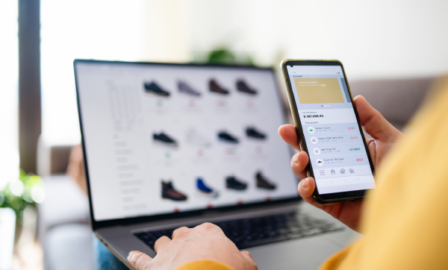Designing for Low Bandwidth Users
With data usage increasing by 47% since March, COVID-19 has made the importance of digital more apparent than ever before. The pandemic has underscored the value of people having access to accurate information in a timely manner, and with more than 25 million lacking high-speed internet access, this digital divide is something that businesses can’t ignore in their design process.
Keeping internet speeds in mind during site design is crucial as 53% of people say they will leave a page if it takes longer than 3 seconds to load, Because feature-rich, graphic-heavy sites tend to not load smoothly on weaker signals, inefficient web design could lessen the reach of your site.
How can you make sure your site is friendly to low-bandwidth users? Here are a few key strategies that you can build into your design plan to ensure a seamless experience for your users, no matter their connection speed.
1. Be Smart with Your Visuals
For designers, crisp, high-resolution images are often the bread and butter of a beautiful interface. They’re also often the prime culprit for a heavy site or app, making up 21% of a site’s weight on average.
Fortunately, there are many workarounds that allow you to have the best of both worlds. Plugin tools within Photoshop, Sketch, and even WordPress can be a great way to make images smaller without sacrificing quality. Changing your file type can also be key for image optimization– JPEGs usually provide the best quality for the smallest file size over GIFs and PNGs and can be compressed significantly without sacrificing resolution. Regardless of file type, a good rule of thumb is to stay below 70 KB in weight for optimal speed.
When you have to reduce visuals entirely, think about taking advantage of using HTML and CSS styling in lieu of images. A styled block goes a long way in terms of visual appeal, is better for search engines and screen readers, and ultimately is much smaller in terms of page weight.
2. Be Responsive with Your Design – (This Can Mean More Than You Think)
Discussions about responsive web design are typically centered around screen size, but consideration should also be paid to low-bandwidth environments. Luckily, there are many tools that can be integrated into your site to detect a user’s bandwidth and optimize the site for them, prioritizing showing only certain content.
A quick way to do this is by incorporating a few lines of JavaScript into your site to detect the user’s connection speed. From there, if the bandwidth of the user is below a certain threshold, you can automatically choose for the “lite” version of your site to load.
When using these tools, be sure to think about the end goal of your user, and what information you want them to take away. From there, you can ensure that that is the information that is most accessible to your user.
3. Be Intuitive with Your Flow and Hierarchy
A seamless user experience should always be top of mind when designing a site, especially when designing for low-bandwidth users. If you spend time in your planning process making sure your site navigation is logical and intuitive, a user will be able to accomplish their goal in a fewer number of clicks. This intentional planning is especially integral for low-bandwidth users as each misguided click means waiting on another page to load that may not have the information they are looking for.
While the controversial “three click rule” has been largely criticized, when it comes to users with low-bandwidth, it should be re-considered. The less time the user has to spend figuring out how to navigate your site, the better their experience will be.
Going Forward with Low Bandwidth Users
With more people accessing information digitally than ever before, it’s vital for web designers and developers to keep low bandwidth situations in mind. Whether your user lives in a more rural area or they’re trying to quickly load something while they’re on the go, a fast site leads to a better user experience and higher site engagement. By creating a site that is more accessible for all users, you’re more likely to build trust with potential customers and drive long-term loyalty.



